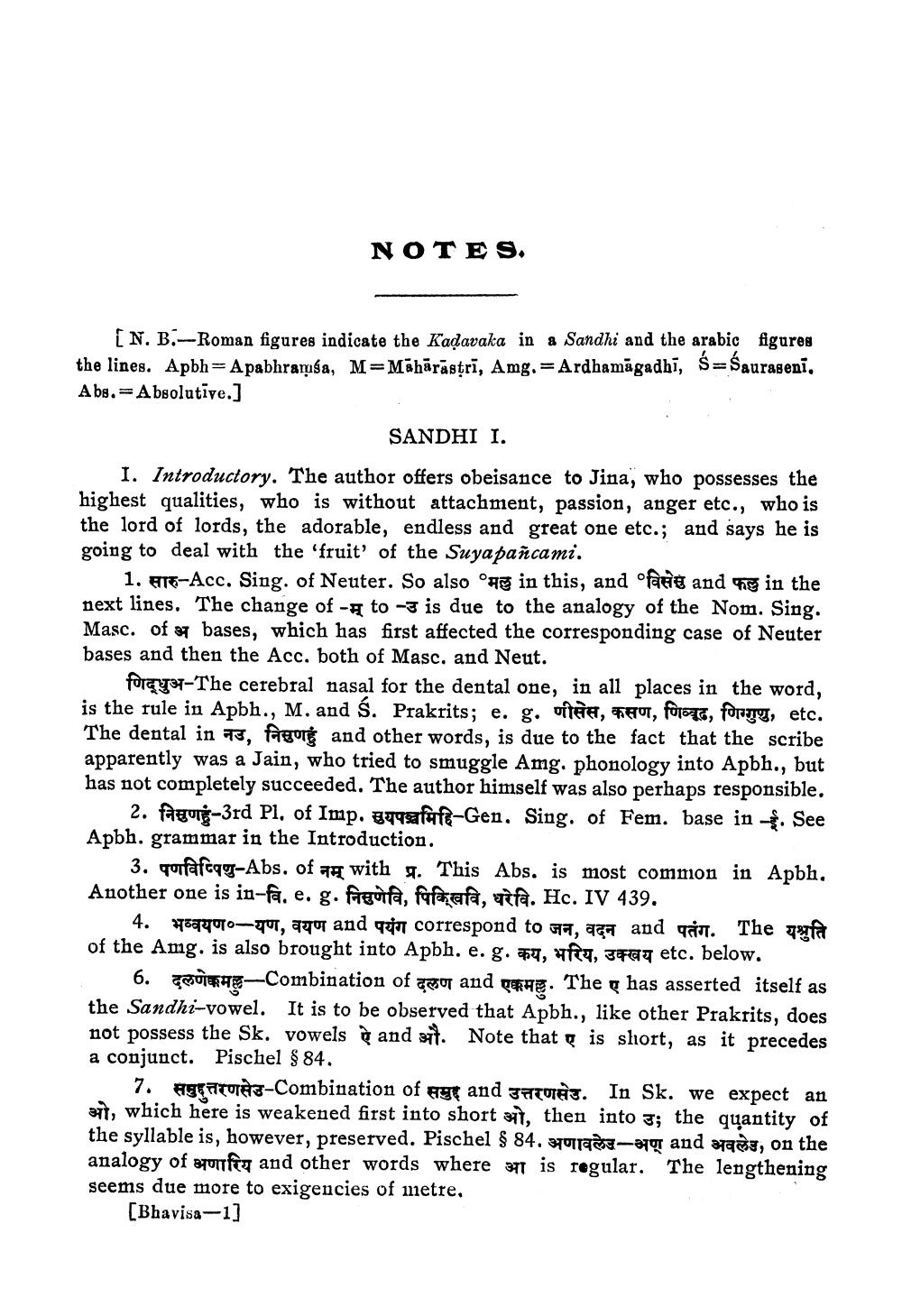________________
NOTES.
[N. B.-Roman figures indicate the Kadavaka in a Sandhi and the arabic figures the lines. Apbh=Apabhramsa, M=Mahārāsṭrī, Amg. = Ardhamagadhi, Ś=Sauraseni. Abs. Absolutive.]
SANDHI I.
I. Introductory. The author offers obeisance to Jina, who possesses the highest qualities, who is without attachment, passion, anger etc., who is the lord of lords, the adorable, endless and great one etc.; and says he is going to deal with the 'fruit' of the Suyapañcami.
1.
Acc. Sing. of Neuter. So also
in this, and fat and in the next lines. The change of - to -3 is due to the analogy of the Nom. Sing. Masc. of bases, which has first affected the corresponding case of Neuter bases and then the Acc. both of Masc. and Neut.
forage-The cerebral nasal for the dental one, in all places in the word, is the rule in Apbh., M. and S. Prakrits; e. g. tèa, nan, fox, for, etc. The dental in, f and other words, is due to the fact that the scribe apparently was a Jain, who tried to smuggle Amg. phonology into Apbh., but has not completely succeeded. The author himself was also perhaps responsible.
2. fa-3rd Pl. of Imp. faft-Gen. Sing. of Fem. base in -. See Apbh. grammar in the Introduction.
3. qufafeqg-Abs. of with . This Abs. is most common in Apbh. Another one is in-fa. e. g. frgia, fafafa, vtfà. Hc. IV 439.
and पतंग. The यश्रुति
etc. below.
4. भव्वयण० - यण, वयण and पयंग correspond to जन, वदन of the Amg. is also brought into Apbh. e. g., f,
6. दलणेकमल्ल — Combination of दलण and एकमहु. The has asserted itself as
ए
the Sandhi-vowel. It is to be observed that Apbh., like other Prakrits, does not possess the Sk. vowels and t. Note that is short, as it precedes a conjunct. Pischel § 84.
7. समुदुत्तरणसेउ - Combination of समुह and उत्तरणसेउ. art, which here is weakened first into short e, then the syllable is, however, preserved. Pischel § 84. analogy off and other words where n is regular. The lengthening seems due more to exigencies of metre. [Bhavisa-1]
In Sk. we expect an into 3; the quantity of and as, on the




